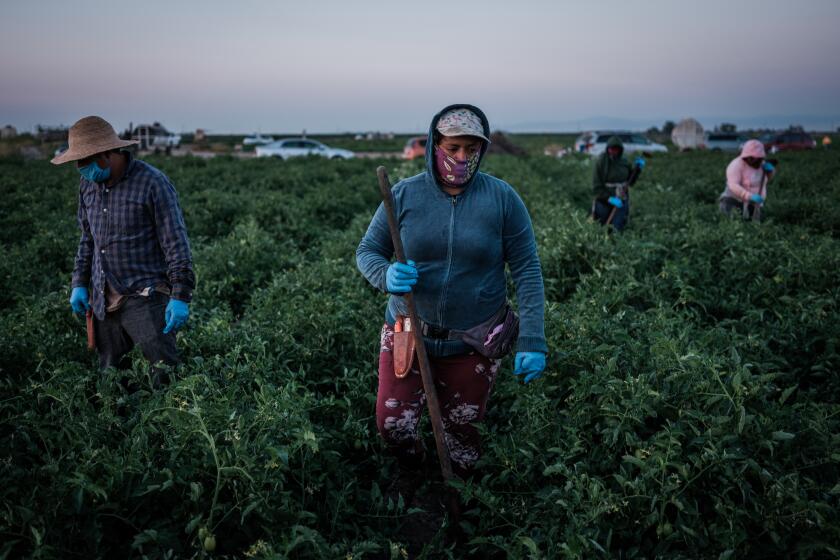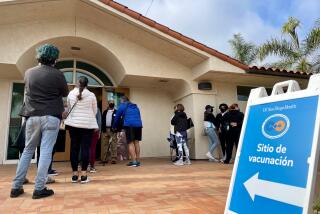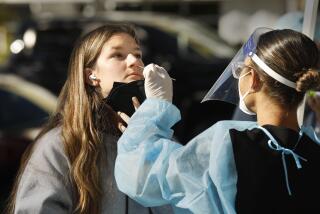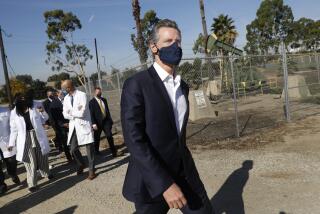Newsom wants to send $52 million to help Central Valley fight coronavirus surge
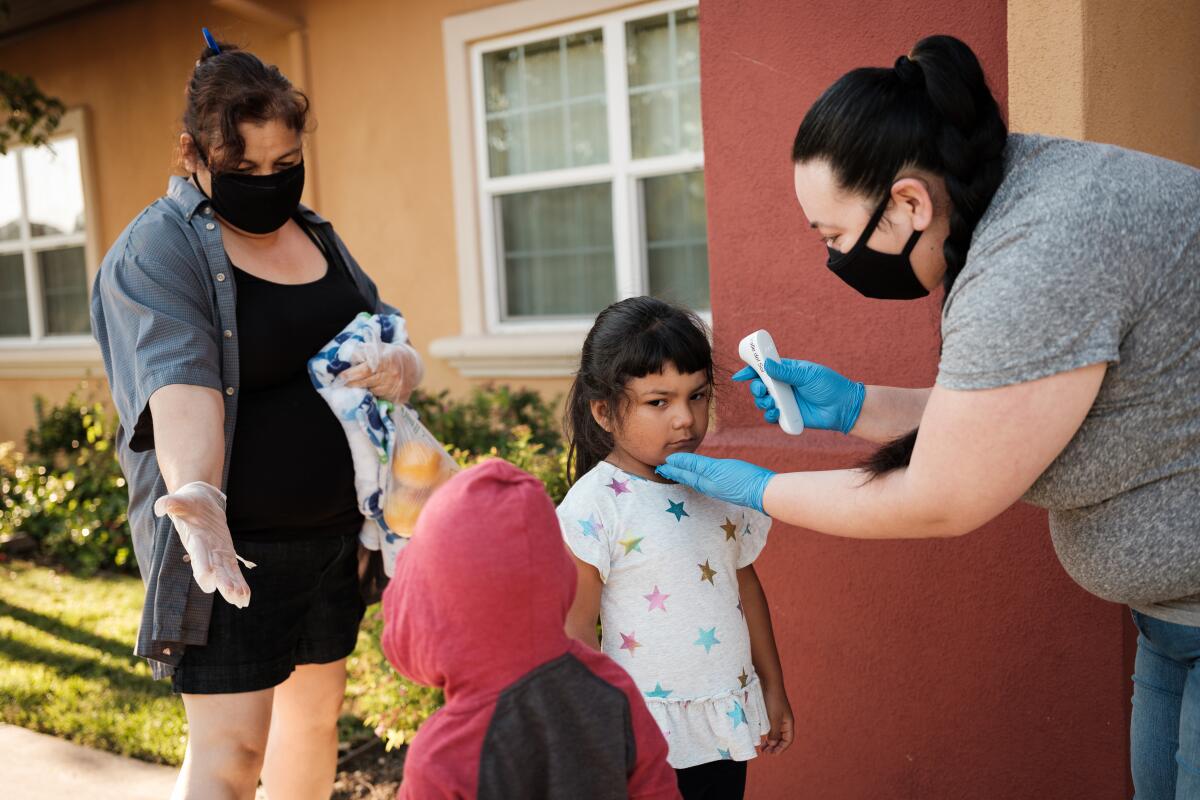
- Share via
SACRAMENTO — Gov. Gavin Newsom said Latinos in the Central Valley have been disproportionately harmed by the spread of COVID-19, prompting the governor to send “strike teams” to eight counties while asking the California Legislature to approve $52 million to improve testing, tracing and isolation protocols in those regions.
Newsom said the targeted approach on eight counties — San Joaquin, Stanislaus, Merced, Madera, Fresno, Kings and Tulare, and Kern counties — comes as the state is seeing widening disparities in deaths and infections of Latinos statewide. Those increases are particularly felt in the Central Valley, where Latinos make up a higher percentage of residents.
The strike teams will be deployed later this week.
“This disease continues to grow in the state of California, it continues to spread, but not evenly,” Newsom said Monday while speaking at Diamond Nuts in Stockton. “It is disproportionately impacting certain communities and certain parts of the state.”
Latinos and Black people have contracted the virus at a higher rate overall than the general population. However, the gap is widening for Latinos. After adjusting for population, Latinos are three times more likely to test positive for the novel coronavirus than white people.
Newsom said the rate of positive coronavirus tests in the Central Valley range from 10.7% to as high as 17.7%. The state’s average is 7.5%.
The surge in cases has hit farmworkers in those regions particularly hard, in part because they often live in close quarters, share transportation to job sites and have little access to healthcare.
Newsom said the $52 million he is asking the Legislature to approve for local public health departments in the Central Valley will come from $499 million in grants the state received from the Centers for Disease Control and Prevention. The governor said he wants to use the $52 million to improve “our isolation protocols, our quarantine protocols, our testing protocols and to enhance our healthcare workers by providing more support as well as more personnel” in the Central Valley.
Newsom said his targeted efforts will mirror those in Imperial County, which has been one of the hardest-hit areas of the state. The rural county, which borders Mexico and Arizona, has reported 1,240 new cases of COVID-19 in the last two weeks.
“We were able to make some improvement in terms of the transmission and spread of the virus by deploying a number of strike teams,” Newsom said.
Those strike teams were made up of state, federal and local personnel who worked to increase hospital capacity and reduce transmission through contact tracing and assisting with workplace outbreaks. The governor’s office said those efforts helped drop the two-week average from 836 cases of COVID-19 per 100,000 to 308 per 100,000.
“We are doing exactly the same thing throughout the Central Valley,” Newsom said.
Up to 70% of new cases of coronavirus in California’s fertile San Joaquin Valley may be Latino workers, but advocates say they lack testing and access to care.
The focus on California’s heartland comes as Newsom has highlighted the need for the state to ensure workplace protections are adequate for essential employees.
Newsom said Friday that he plans to work “hand in glove” with the Legislature to increase COVID-19-related sick leave, ease workers’ compensation claim requirements, enforce labor laws and ensure employers are reporting outbreaks. The state Legislature reconvened Monday from an extended recess after having to shut down twice this year due to COVID-19 concerns.
Lawmakers have until Aug. 31 to send bills to Newsom before adjourning for the year.
Newsom’s decision to target the Central Valley for virus mitigation coincides with his standoff with two small cities there that have defied state orders by allowing businesses to remain open despite being on the state’s watchlist. Newsom has threatened to cut off federal coronavirus funding that the state is handing out to Atwater and Coalinga unless they follow state directives.
Atwater Mayor Paul Creighton on Friday called the move “a bullying tactic” to “extort us.”
More to Read
Sign up for Essential California
The most important California stories and recommendations in your inbox every morning.
You may occasionally receive promotional content from the Los Angeles Times.
